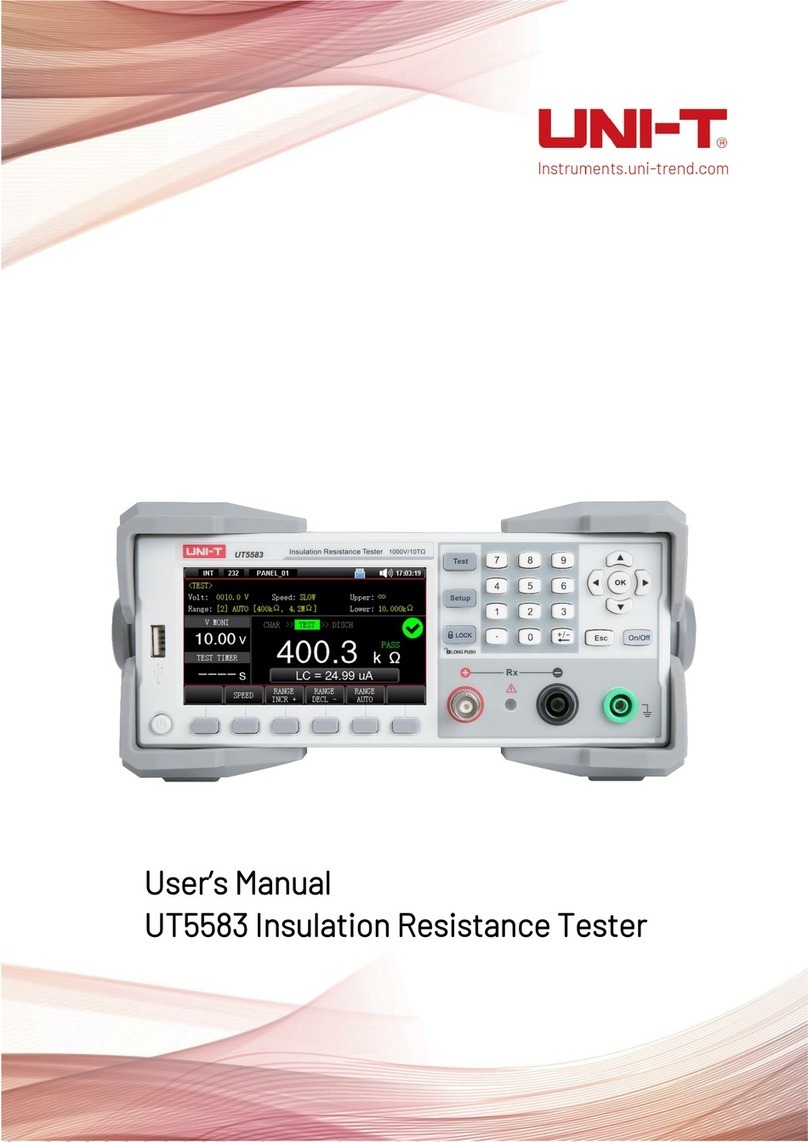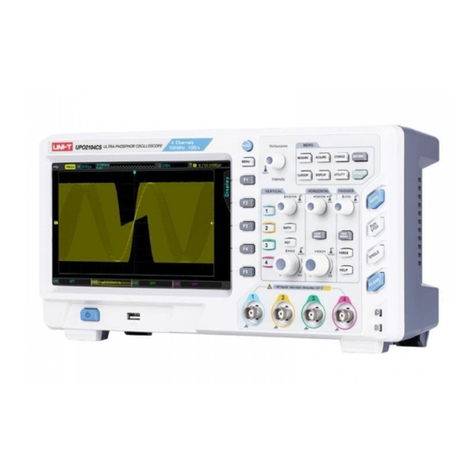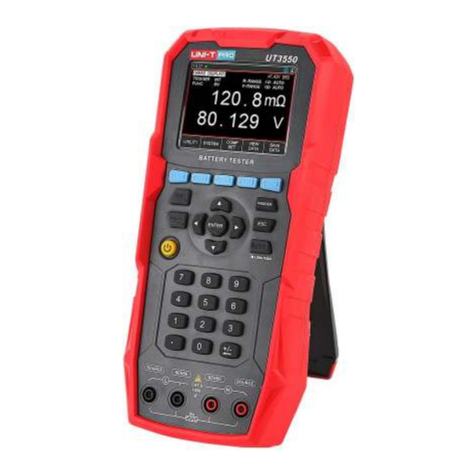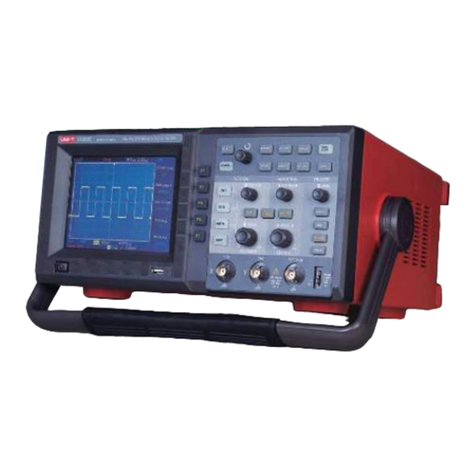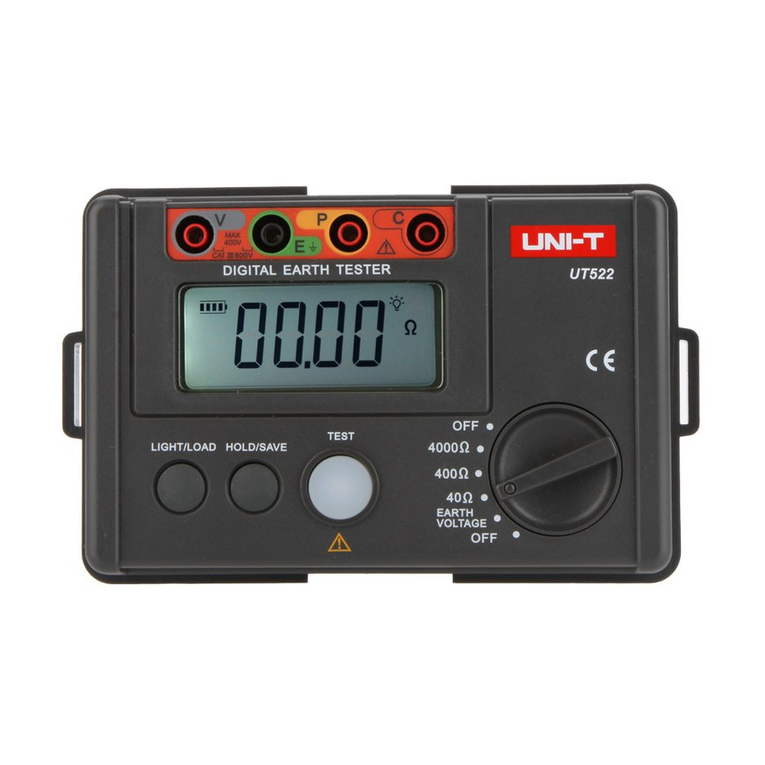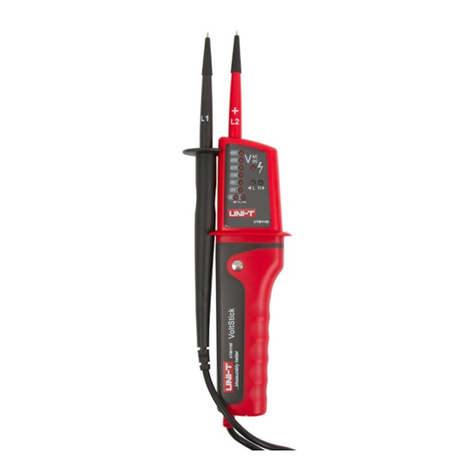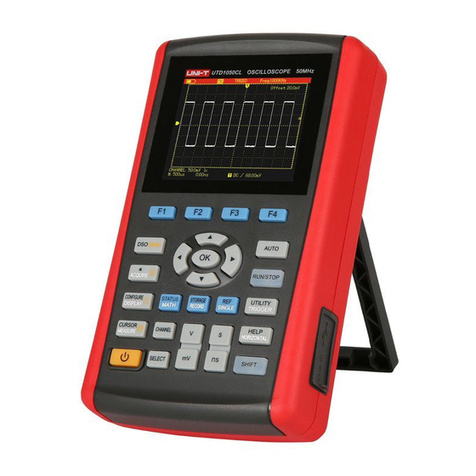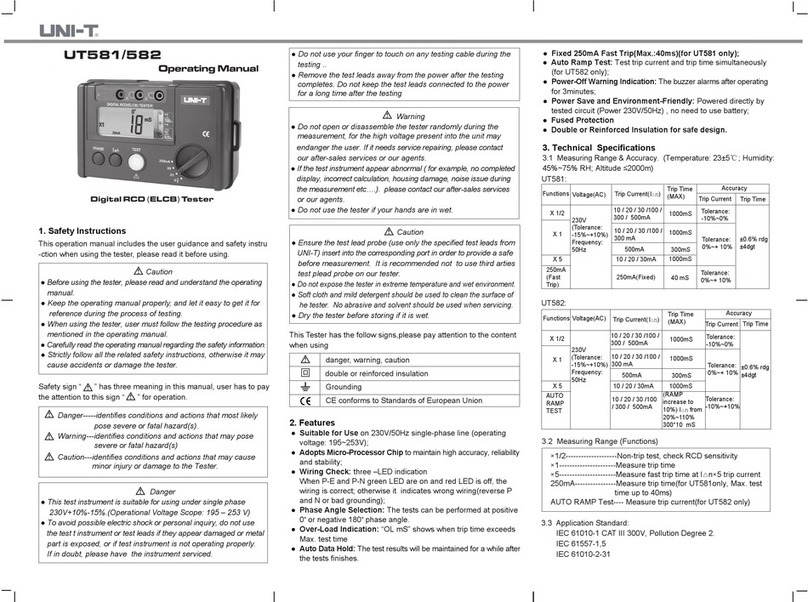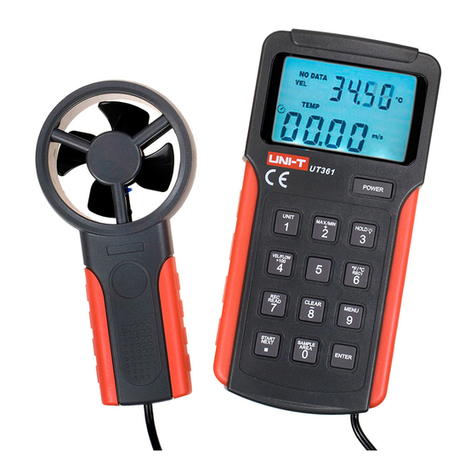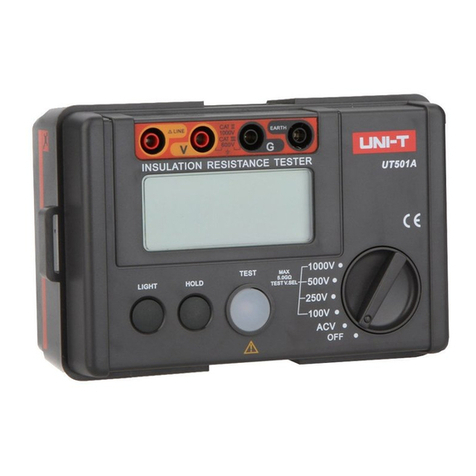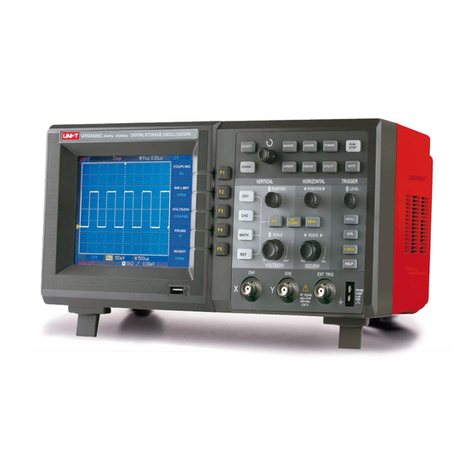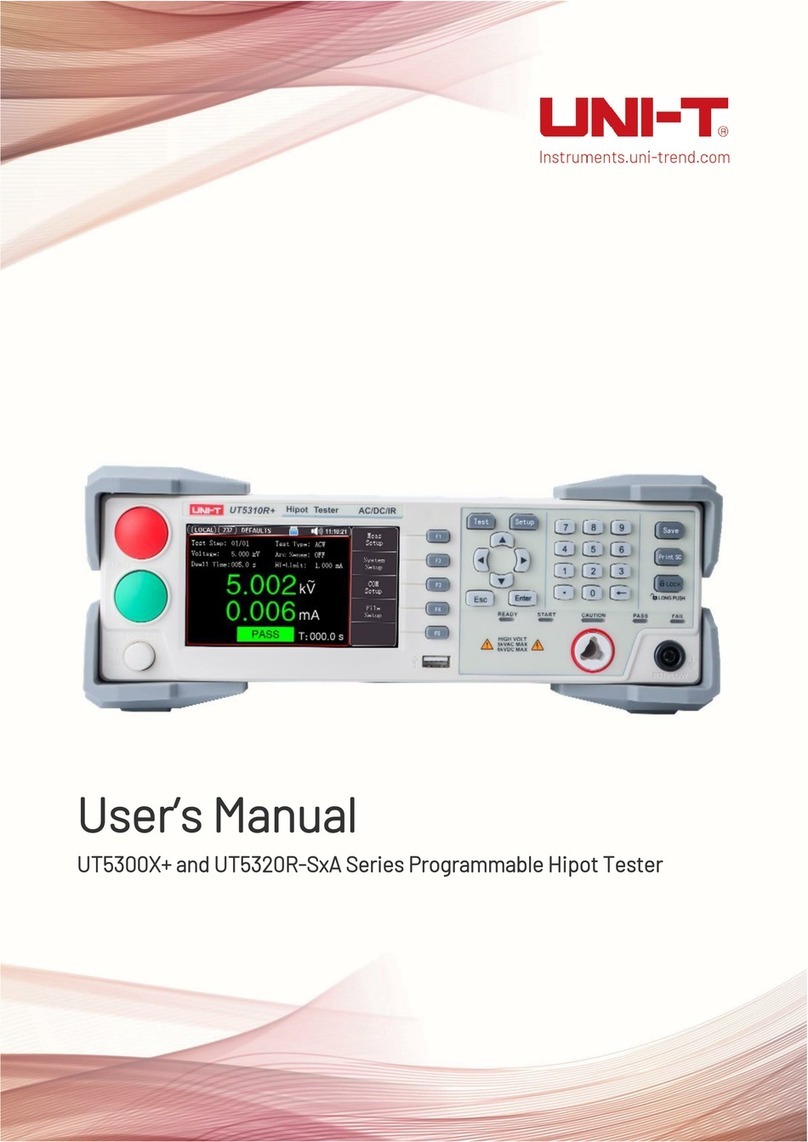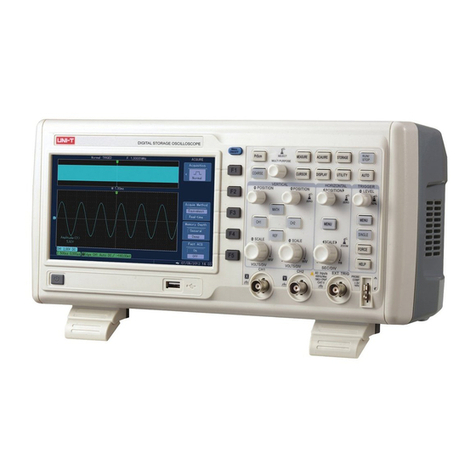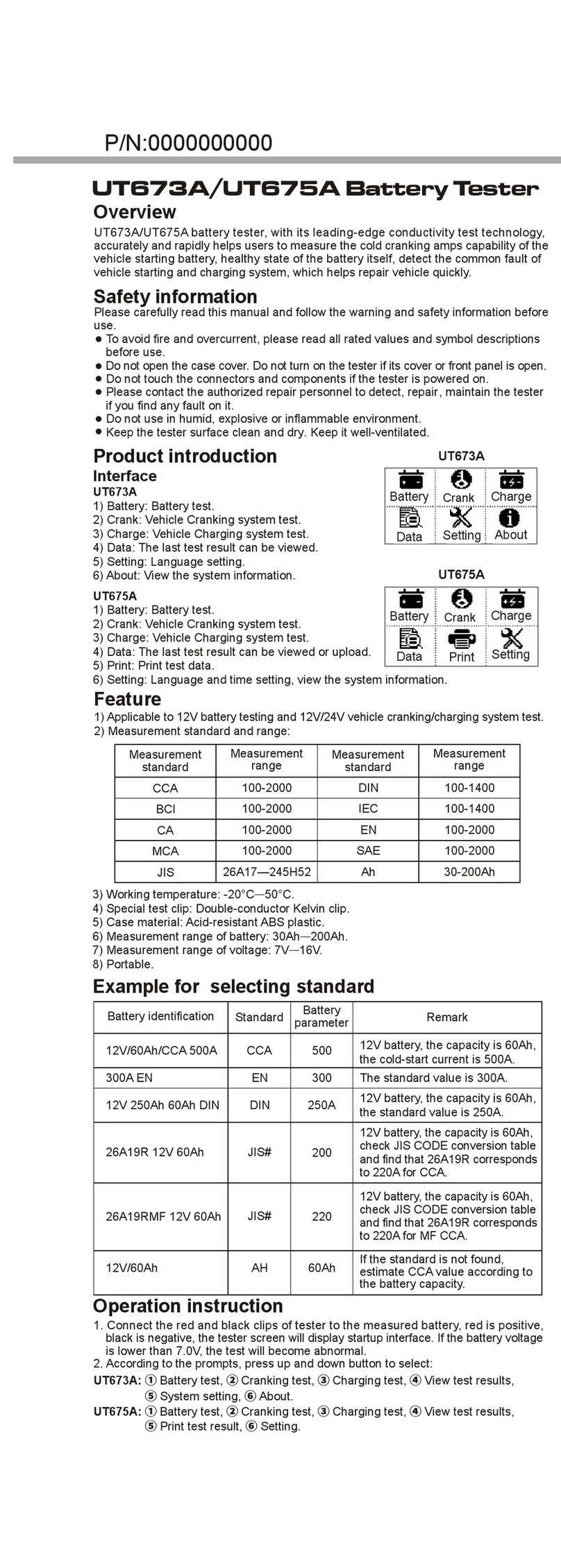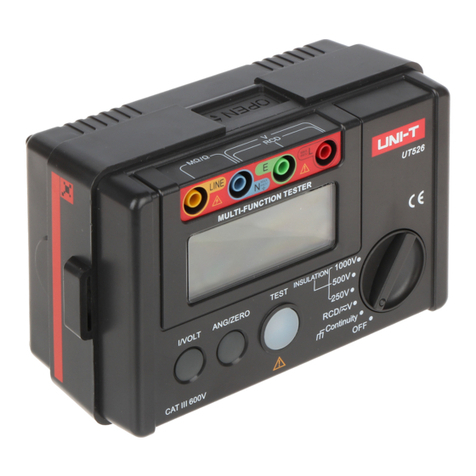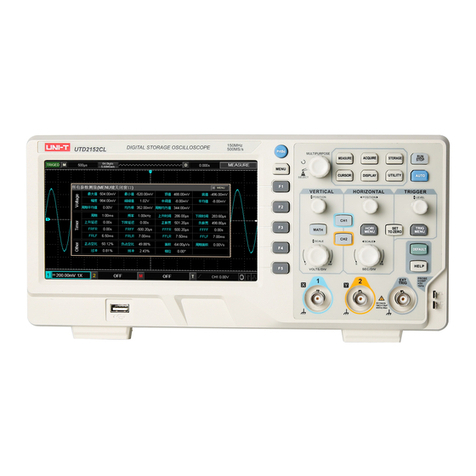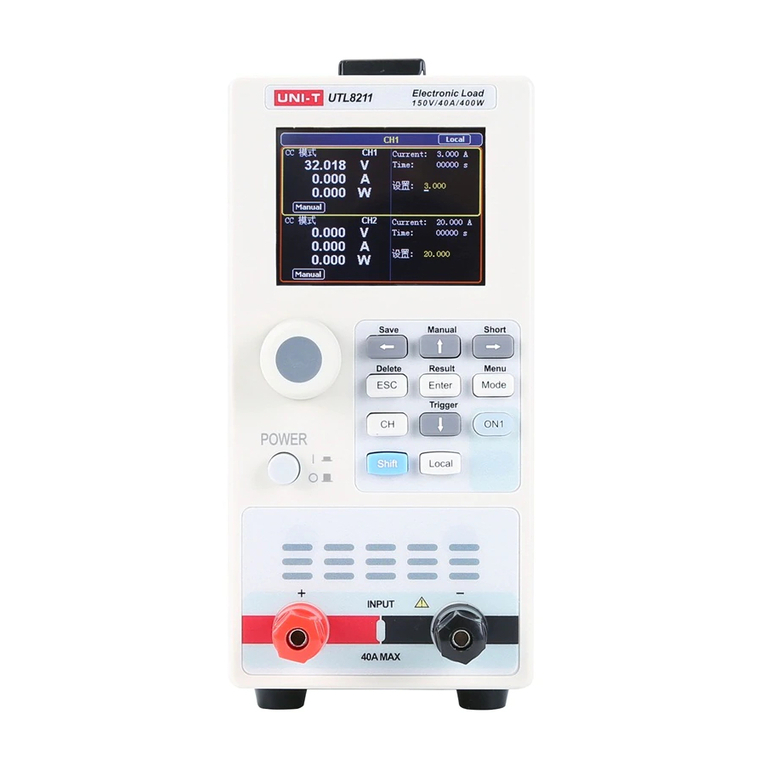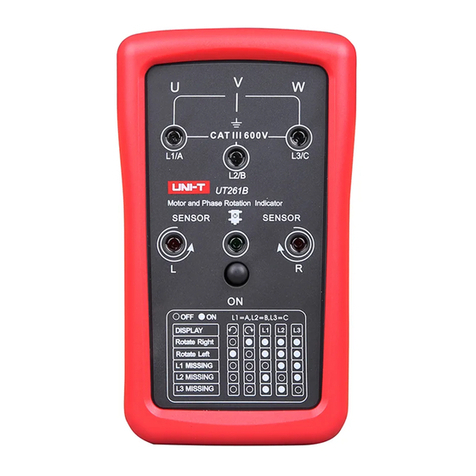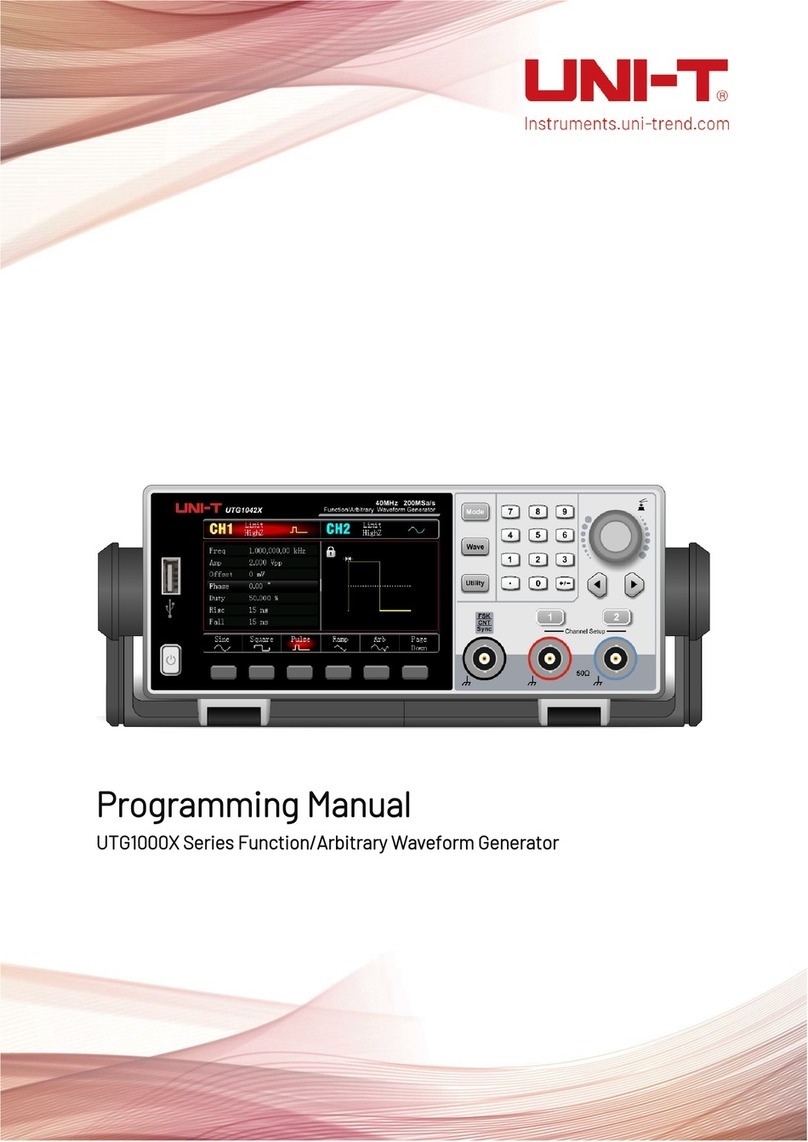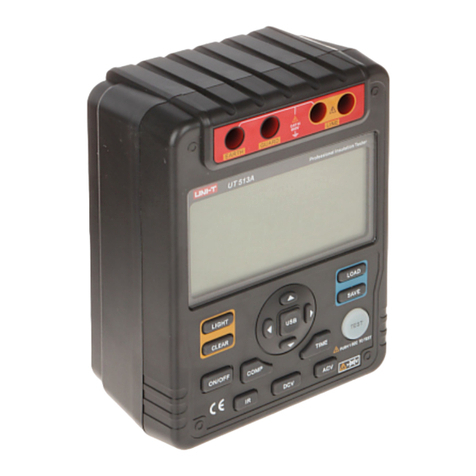
Programming Manual MSO/UPO2000 Series
3/ 156
Instruments.uni-trend.com
The physical hardware communications link is not defined by SCPI. While it was originally
created for the IEEE-488.1 (GPIB) bus, SCPI can also be used with RS-232, RS-422, Ethernet,
USB, VXIbus, HiSLIP, etc.
SCPI commands are ASCII textual strings, which are send to the instrument over the physical
layer (e.g., IEEE-488.1). Commands are a series of one or more keywords, many of which take
parameters. In the specification, keywords are written CONFigure: The entire keyword can
be used, or it can be abbreviated to just the uppercase portion. Responses to query
commands are typically ASCII strings. However, for bulk data, binary formats can be used.
This section introduces the format, symbols, parameters, and abbreviations of the SCPI
command.
Instruction Format
The SCPI command is a tree-like hierarchy consisting of multiple subsystems, each
consisting of a root keyword and one or more hierarchical key words. The command line
usually begins with a colon ":"; Keywords are separated by the colon ":", followed by optional
parameter settings. The command keyword is separated by spaces from the first parameter.
The command string must end with a newline <NL> character. Add the question mark "? " after
the command line. It is usually indicated that this feature is being queried.
Symbol Description
The following four symbols are not part of SCPI command, it cannot send with the command.
It usually used as supplementary description of command parameter.
Brace { } usually contains multiple optional parameters, it should select one parameter
when send command.
Such as DISPlay:GRID:MODE { FULL | GRID | CROSS | NONE} command
Vertical Bar | used to separated multiple parameters, it should select one parameter when
send command.
Such as DISPlay:GRID:MODE { FULL | GRID | CROSS | NONE} command
Square Brackets [ ] the contents in square brackets (command keywords) can omissible.
If the parameter is ignored, the instrument will set the parameter as the default value.
Such as MEASure:NDUTy? [<source>] command, it presents current channel
Triangular Brackets < > the parameter in the brackets must be replaced with a valid value.
Such as use DISPlay:GRID:BRIGhtness 30 form to send DISPlay:GRID:BRIGhtness <count>
command
Parameter Description
The parameter in this manual can divide into five types: Boolean, Integer, Real, Discrete,
ASCII string
